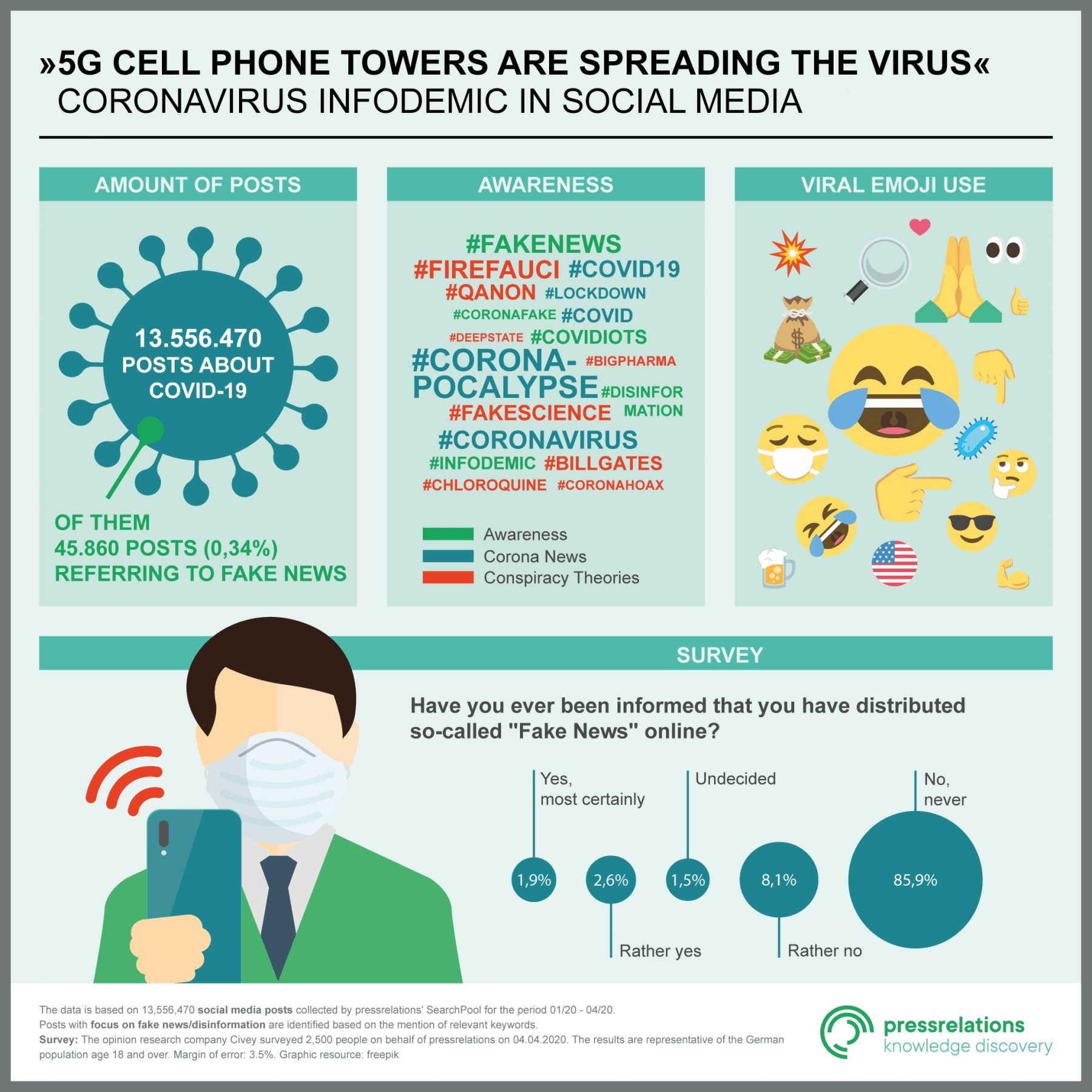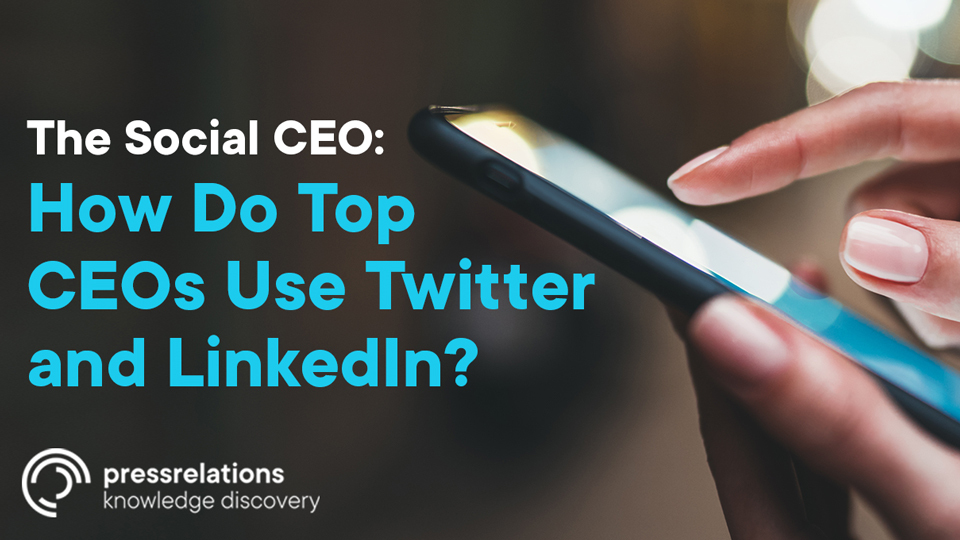A more-than-shady news source? A report that is not so precise with the facts? A YouTube video with content created not exactly around the facts? Talking about “fake news” makes sense here. Thanks to Donald Trump, the term has become globally accepted, ironically on all sides of the news. The concept of disinformation is much more precise – the spreading coronavirus infodemic shows why.
To err is to human, but to deceive is infamous. In other words, this is exactly where the fine line runs between what linguistics describes as misinformation (error-based misinformation) and disinformation (disinformation with the intention of deception and/or political agenda). The term fake news blurs this line, as it is used as a synonym for both categories. Those who use it do not make it clear whether they are talking about simple misjudgments or outright falsehoods. In addition, some people use fake news as a fighting term to disqualify critical media coverage as false across the board. In view of the false reports, half-truths and conspiracy myths that are spreading online regarding the coronavirus, a differentiation is needed more than ever.
THE TENDENCY TO BELIEVE IN CONSPIRACIES
In a recent survey by the University of Vienna, a full 39 percent of the 1,502 respondents did not identify the sentence “Bill Gates wants to forcefully vaccinate mankind in order to make a lot of money” as false. 41 percent could not classify the statement “The virus is a bioweapon” as false information. This willingness to believe in conspiracies is already evident in two studies from April. In an analysis of 120,000 Facebook posts by the University of Münster – including 15,000 from the so-called alternative media – the researchers seldom encountered misinformation, but they identified a great amount of posts that push the theory that the coronavirus is a grand conspiracy or a hoax. The University of Oxford, in turn, cooperated with the International Fact-Checking Network (IFCN): 59 percent of the 225 contributions identified as false by the IFCN were based on facts that were true in places, misrepresented, or taken out of context beyond recognition. In the Social Web, this perfidious form of disinformation in the style of “alternative facts” generated a particularly large number of clicks.
PROPAGANDA FROM BELOW
Can five glasses of water, a schnapps, or a bottle of disinfectant flush the coronavirus out of the body? Such supposed tips may be dangerous, but they are relatively easy to refute via a simple fact check. The situation is different when people are convinced that 5G towers spread corona and Big Pharma, Bill Gates, Angela Merkel and the WHO are in cahoots and seek absolute power through mandatory vaccination. The narratives of secret alliances and grand conspiracies are no longer in the realm of error, but in the field of more or less carefully constructed half-truths and manipulation: on the side of the recipient, belief trumps facts. In this world, an educational video of the Ministry of Health is then mocked as another ‘lie of the elites’. Peter Pomerantsev, a British journalist specializing in disinformation, calls this phenomenon “propaganda from below”. If you want to sow discord, you no longer need focused campaigns, thanks to the snowball effect in social networks, where opinion is already considered knowledge.
THE TIP OF THE ICEBERG
Platforms such as YouTube, Twitter, Facebook and Instagram can mark disinformation as such and block propaganda accounts if lies are spread there and violence is called for. Several large companies have even committed themselves to stronger control and more effective verification mechanisms in a code of conduct in 2018 – but without visible consequences. Unlike the EU Commission in its appeal last week, journalists are therefore no longer relying on admonitions and insight but on punishment. Another important “super spreader” of dubious messages are new applications such as TikTok and closed – and therefore unobservable – networks such as WhatsApp or Telegram. After WhatsApp severely limited the forwarding function this Spring to prevent false reports and rumors about COVID-19 from spreading like wildfire in huge groups, Telegram has become a reservoir of frustration.
KEYWORD ‘AWARENESS’
An important question in this context is whether users are aware of the probleп on the social web or in closed networks. The opinion research company Civey surveyed 2,500 people on behalf of pressrelations. Only 4.5 percent of those surveyed had ever reported that they had spread fake news or disinformation, while another 1.5 percent were undecided. Can it be deduced from this that 94 percent have never posted or forwarded false reports or conspiracy myths? Or that they have ignored or not perceived corresponding indications at all? The good news is that at least 6 percent of those surveyed are aware of the problem.

GLOBALLY VIRAL
Many of the conspiratorial narratives on COVID-19 are not locally influenced, but rather of global virality: this is also shown by an analysis of relevant keywords and hashtags in pressrelations’ SearchPool. Since March, the number of corresponding hashtags on the German social web has also been rising sharply. Examples of these major trends are #QAnon, #billgates, #deepstate or #bigpharma. The narrative behind them has now reached a larger audience, mainly through YouTube and celebrities such as Xavier Naidoo or Attila Hildmann. To summarize it briefly once again: Bill Gates has long-planned world domination and population exchange. Thanks to Corona, the WHO and various governments, he can now finally vaccinate people for this purpose and monitor them through chips. So far, it is beyond absurd. But it gets even worse: Donald Trump uses the chaos caused by COVID-19 to smash an international human trafficking ring of politicians and celebrities and to free thousands of children. Depending on the story, the children were enslaved or had blood drawn from them – from which an elixir of youth is then made.
“FAKE NEWS” AS A FIGHTING TERM
In the period of the initial restrictions, the hashtag #fakenews gained significantly in popularity: the pressrelations SearchPool shows two clear peaks in calendar weeks 12 and 16. Many of the contributions in week 12 are retweets of a posting by the AfD politician Beatrix von Storch. She advised the federal government to apply the “fighting term of fake news” to its own press work. Von Storch thus referred to the initial restrictions that were finally decided on nationwide after much to and fro.
Many clicks and posts are also generated by a video on YouTube of the right-wing extremist Compact magazine, which has meanwhile been observed by the Office for the Protection of the Constitution: “So bludgeons the hygiene dictatorship, Gates and Corona” (138,034 hits, as of 21.04.2020). The funding of journalistic projects by the Bill & Melissa Gates Foundation is also met with mistrust and triggers wild speculation. The targets of the rage are individual coronavirus researches by SPIEGEL Online – which, however, have always had a transparent declaration of support by the foundation as an addendum. But the conspiracy carousel goes even further: other users rely on SPIEGEL Online to “prove” to the research network corrective an “unfair” funding by the George Soros Foundation. Apart from the anti-Semitic connotations and the well-known Soros bashing, the users do not succeed in making a big revelation here either. This is because the relevant article is from 2017.
The coronavirus has caused the online reach of TV stations and newspapers to explode, at least in the short term. This seemed to suggest increased confidence in journalism and official sources in uncertain times. But the numbers are deceptive: disinformation is a trump when it generates many clicks for social networks. Facebook has apparently known for years that its news feed algorithms act like a rift and push people to extreme views. Whether the recent discussions triggered by Donald Trump about the accountability of Twitter and Facebook will bear fruit is one of the crucial questions in the year of coronavirus, US elections, and the global uprising against racism. In a study carried out in April with one thousand respondents each in the USA, Germany, Great Britain and Sweden, the consultancy firm Kekst CNC found that general trust in the media had indeed declined in all the countries studied. Given the swirling social media rumor mill, this is not good news.



